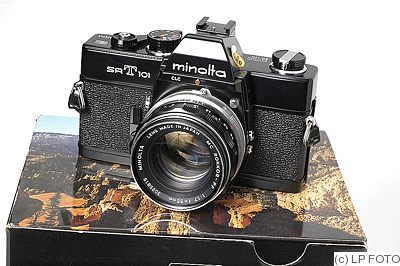
- HOW MUCH IS A MINOLTA CAMERA WORTH MANUAL
- HOW MUCH IS A MINOLTA CAMERA WORTH FULL
- HOW MUCH IS A MINOLTA CAMERA WORTH PC
HOW MUCH IS A MINOLTA CAMERA WORTH MANUAL
+1 for overall greatness, one of the last and best of the manual focus era Simply, this is one of the best manual focus cameras made by any manufacturer, ever.

This is my favorite Minolta camera I’ve ever held or used, and one that I hope to use many times in the future. Getting one in good working condition could be difficult due to a common capacitor problem, it’s worth trying to find one in good condition, especially if you have a collection of Minolta MC/MD mount lenses.
HOW MUCH IS A MINOLTA CAMERA WORTH FULL
It is light weight, yet solidly built, it has a full information viewfinder that is as large and bright as viewfinders in modern DSLRs today, it supports full manual mode along with aperture priority auto exposure mode, and can use it’s meter in full manual mode unlike many other SLRs of the past 30 years (Hello Nikon N80!) It is a good looking camera, especially in black, that has excellent ergonomics and is a pleasure to hold and shoot with. The Minolta X-570 is one of the best manual focus SLRs Minolta ever made. Weight: 803 grams (w/ lens), 486 grams (body only)

HOW MUCH IS A MINOLTA CAMERA WORTH PC
Lenses: 50mm f/1.7 Minolta Rokkor-X PF coated 6-elementsĮxposure Meter: Silicon Photo Cell TTL Meter with Aperture Priority Auto Exposureīattery: 2 x S76/LR44/SR44/357 1.5v Alkaline, Silver-Oxide, or Lithium Cellsįlash Mount: Hot Shoe, plus PC X-Flash Sync It was not a huge hit when it first came out as it was seen as a lower level camera to the X-700, but in the years since has become favored by photographers and collectors for its fully capable feature set, small size, excellent ergonomics, and excellent viewfinder. It was one of the last manual focus SLRs released by Minolta before they released the auto focus Maxxum series. The X-570 was considered to be a “step down” camera to Minolta’s top of the line X-700, even though it offered several improvements to the viewfinder over the X-700. The X-500 was available in both chrome and black, but the X-570 was black only. It was called the X-500 in Europe in Asia. In January 2006 Konica Minolta announced that they were withdrawing from the camera and photo business, transferring their assets to Sony, who since have continued development of the A system through their Alpha series.This is a Minolta X-570 35mm Single Lens Reflex camera which first went on sale in April, 1983. Konica and Minolta merged their photo and camera businesses in October 2003. The A lens mount is still the same today, but some modifications have been made to the electronic contacts to facilitate new functions such as motor zoom (xi lenses, now discontinued) and a more sophisticated flash metering system (ADI). Minolta introduced a new lens mount, the A system, breaking compatibility with its earlier manual-focus lenses in the MC and MD system.

In other respects, the Maxxum offered most of the standard features of other cameras of the day, with the exception of a rather low flash sync speed (1/125 sec.) and no multi-exposure capability. The metal housing of older Minolta SLR cameras was replaced with a lighter, cheaper body made of plastics. However, electronically controlled buttons on the camera body now replaced the mechanical aperture ring on the lens, and the setting was electronically displayed on the body and in the viewfinder. The aperture and focus were mechanically driven through the lens mount from the camera body. The Minolta 7000 had its AF sensors and the focusing drive inside the camera body, and as a result the lenses could be much smaller and cheaper. Nikon already had a camera with integrated motor drive on the market, the N2000 ( F-301 in UK), but its autofocus counterpart, the N2020 ( F-501 in UK), appeared after the Maxxum/Dynax.

The Pentax ME F had focus sensors in the camera body, while the Chinon CE-5 used a lens with built-in active infrared sensors. Although the Nikon F3AF (1983), Pentax ME F and Chinon CE-5 already had presented autofocus single lens reflex cameras, autofocusing could not be achieved without the use of special motorised AF lenses.


 0 kommentar(er)
0 kommentar(er)
